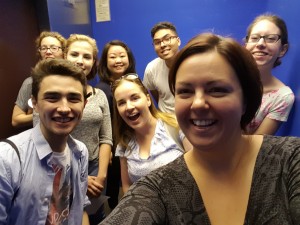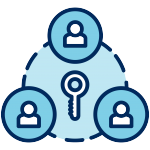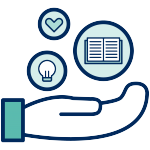
Written by Carla Alexander, Content Writer
So much has changed within the past year — not only within the world, or the university, but within the Innovation Hub as well. As the Innovation Hub progressed throughout the pandemic, our projects have highlighted new and continuing issues students navigate, such as flourishing in online classrooms or maintaining connectiveness online. With this context in mind it’s important to begin thinking about the tools that guide, frame, and inspire our work, including the most important one of all: the Domains of Innovation.

The Domains of Innovation define the five areas that are crucial to the happiness, fulfillment, and success of student at UofT: Access for Every Student, Fostering Connectiveness, Future-Ready Students, Integrated Learning Experiences, and Whole Student Development. These domains have been the cornerstone of the Innovation Hub’s work since 2016, when it was first founded, but that was now five years ago. Now that so much has changed — in the world, within the university, within ourselves — are we still connected to these domains?

Manager, Innovation Projects
To answer this question, I approached Julia Allworth, Manager, for a discussion on the Domains of Innovation. We discussed the Innovation Hub’s goals, vision, the importance of our work — and the Innovation Hub’s history. To answer these questions, we have to start at the beginning.
For Students, By Students: Where It All Began

The Innovation Hub began in 2016, with a launch event in Chestnut Residence. Over two-hundred-and-fifty attendees, both staff and students, were tasked with brainstorming what they thought were the most pressing issues that students were facing. The Innovation Hub collected this data, processed it, and formed the first draft of the Domains — but something was missing. They realized that, in order to create a framework for student issues, they needed greater student involvement. With the help of student-led focus groups, the Innovation Hub launched the final set of the Domains of Innovation: the framework that defined the Innovation Hub and what we were aspiring to achieve.
Since then, the Domains of Innovation have formed the foundation of the Innovation Hub’s work. We’ve worked with various UofT partners to research, analyze, ideate and test their design challenges, from everything to food insecurity to non-traditional student experiences. However, the cornerstone of the Innovation Hub’s method, of design thinking, is iteration and improvement. As we’ve moved into the future, and have found ourselves in new contexts, do the original domains still serve us? Do they still serve the students we seek to help?
Shifting Contexts and Revisiting Goals: Where We Are Today

When I first approached the topic of revisiting the Domains for a potential blog post, I was thinking within the context of a UX designer — of somebody who constantly looks to improve and ideate. Though I saw initially little to improve upon, I asked Julia of her thoughts on the current domains and whether they served the community. The answer I received was surprising. The Domains are still relevant, and still benefit both the Innovation Hub and the students we serve, because the issues that formed the foundation of the Domains have yet to be fully unraveled.

The Domains of Innovation, by design, are broad, aspirational goals, that may seem lofty at first glance. Take “Access For Every Student”, for example — is this an achievable goal? Some may say no, that reaching it would be extraordinarily difficult (and perhaps not worth pursuing!), but the Innovation Hub doesn’t believe that should be a deterrent. Though it may be a struggle, the Innovation Hub believes that, until a student comes forward and says “yes, there’s access for every student”, that our work will never be done.
Conclusion

UofT students, both then and today, still face challenges that fit within the domains. The present Domains of Innovation serve a valuable purpose to us; not only as an aspirational set of future goals, but as a framework for our current work. Are there areas that the Innovation Hub could be focusing on? What are the most pressing issues? The Domains of Innovation can help guide those thoughts. As the pandemic has shown us, there is still plenty of work to be done. Students, after all, benefit from Integrated Learning Experiences, from having the ability to control and guide their own educational experiences — something that was heavily challenged by COVID-19 and distance learning. Until every student is given that agency, our work will never be done — and the same goes for the other Domains of Innovation.
If you’re interested in checking out the Innovation Hub journey with the Domains of Innovation, take a look at these reports!
- Innovation Hub Insights and Ideas: the first report that started it all!
- What Matters to UofT Students? An in-depth qualitative analysis of student needs, using the Domains of Innovation.
0 comments on “Revisiting the Domains of Innovation”